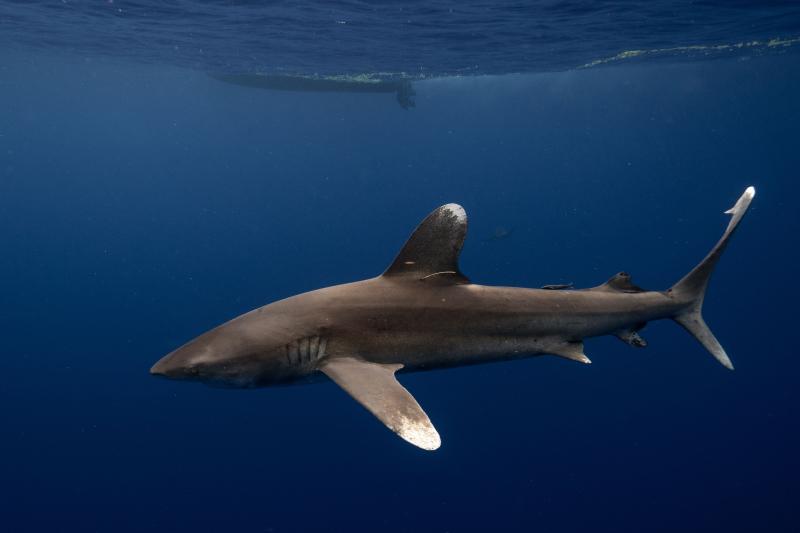Oceanic whitetip sharks are distinguishable by the distinctive white patches on the tips of their fins. They were once abundant across the globe—even to the point of being considered pests by some researchers and commercial fishermen. However, these distinctive sharks have declined dramatically in recent decades, and are now listed as threatened under the Endangered Species Act. On this episode of Dive In with NOAA Fisheries, we discuss the forthcoming recovery plan for oceanic whitetips with Research Fish Biologist, Dr. John Carlson. NOAA Fisheries creates recovery plans for species listed under the Endangered Species Act, which marks its 50th anniversary this year.
Historic accounts from the 1950s and 1960s show that oceanic whitetip sharks were once abundant throughout their range. This abundance and the high market value of their fins made them the target of bycatch throughout the 1980s. Oceanic whitetips don't reach sexual maturity until around 8 years old, and they give birth to only four to eight pups every other year, contributing to decades of population decline despite shark finning being banned in the United States. As one of the developers of the Oceanic Whitetip Shark Recovery Plan, Dr. John Carlson discusses the goals of the plan and innovative solutions being used to reduce fishing mortality and assess the recovery status of the population. He also tells us how scientists are measuring success and sheds light on challenges—such as climate change, data gaps, and gaining international cooperation—that complicate the recovery of this species.

